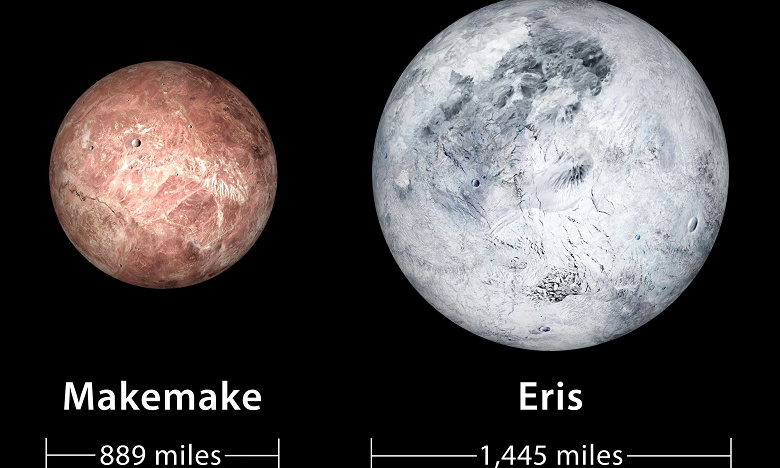Scientists now believe that all dwarf planets in the outer solar system may exhibit surface activity
Pluto differs significantly from the classical planets in many respects. It is smaller than the Moon, has an elliptical orbit that sometimes brings it closer to the Sun than Neptune, and is part of a cluster of icy bodies on the outskirts of the Solar System.
However, studies carried out by the New Horizons probe revealed the geological activity of Pluto. It has a thin atmosphere, mountains rising above icy plains, and other geological formations. In this respect, Pluto is more similar to the Earth than to the Moon, which forced us to reconsider its classification and classify it as a dwarf planet.
However, astronomers still cannot unambiguously explain what supports Pluto’s geological activity. This may be due to the gravitational influence of its satellite Charon or subsurface processes. But, regardless of the reason, Pluto — the exception, not the rule, in comparison with other objects in the outer solar system. Other objects on the outskirts of the solar system of similar size and composition were thought to be inactive. But a new study shows that this is not the case, at least for two dwarf planets — Eris and Makemake.
They are also poorly studied and their optical observations are presented only in the form of blurry dots. However, spectral observations provide information about the composition and properties of their surface.
A team of researchers, studying the spectral lines of molecules on the surface of Eris and Makemake, in particular methane, was able to determine the ratio of deuterium to hydrogen. If these dwarf planets have not exhibited surface activity since they formed more than 4 billion years ago, then the ratio of deuterium to hydrogen in their methane should be relatively high. If surface methane was formed as a result of active geological processes, then the ratio should have been lower. As a result of the study, the team found that the ratio on Eris and Makemak indicates active geological processes on their surface.
Eris, close in size to Pluto, has geological activity, which is understandable taking into account the studied properties of Pluto. The most surprising activity was on the surface of Makemake, which is 60% smaller than Pluto. Even if Makemake is geologically active, it is likely that other dwarf planets such as Haumea could also be geologically active.
These results suggest that most, if not all, dwarf planets in the solar system may be geologically active. To unlock these mysteries and gain greater understanding of geological processes, scientists hope to send probes to further study objects in the outer solar system.

